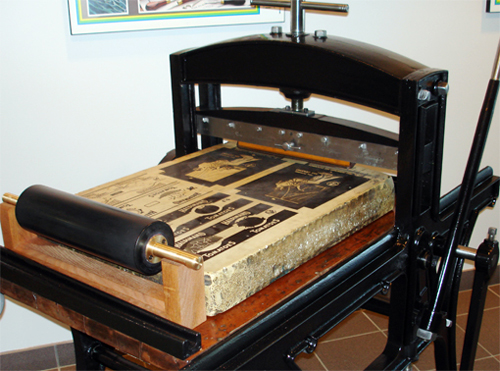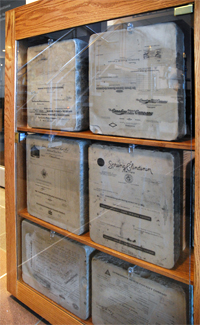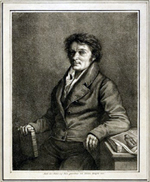
The Collection › Here |
||||
Alois Senefelder, a German born in Prague, first came upon the process of drawing images onto a smooth polished limestone. The concept is based on the theory that oil or grease does not mix with water. This simple stroke of genius brought credit to Senefelder as the inventor of Lithography. After patenting his invention in 1818, the world was introduced to more intricate detail and real color. For the first time, there was a process to re-create fine art works.

|
Litho stone or Lithographic stone is a type of fine-grained hard limestone. This homogenous and blemish-free stone was formed during the Late Jurassic period. Read more »  |
|||

|
 Printing Museum and Restoration |
800 Westgate Road Oakville, ON L6L 5N2 Tel. (905) 821-0000 Email: info@howardironworks.org Website: www.howardironworks.org |
- The Collection - Restoration - HIW Museum - Lease/Sales Program |
- Antique Books & Periodicals - About HIW - Volunteering Opportunities - Museum Shop |
